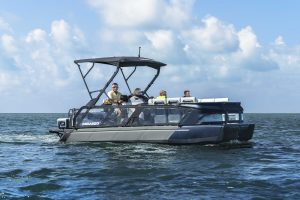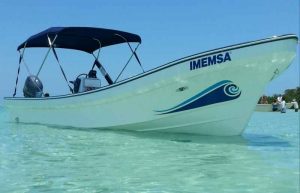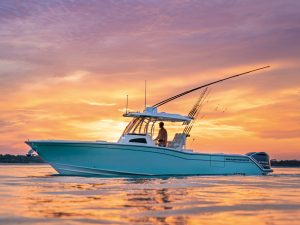Pinellas Bayway Bascule Bridge Span "E"
Weather
The Pinellas Bayway Bridge Span "E" is an essential infrastructure project undertaken in Pinellas County, Florida. The Florida Department of Transportation (FDOT) District 7 awarded American Bridge the design-build contract for this crucial connection between Saint Petersburg and Cabbage Key. The new two-lane high-level fixed span bridge will replace the existing bascule bridge, offering improved efficiency and increased capacity for traffic in the region. Learn more about the project here.
Spanning across the entrance of Boca Ciega Bay, the Pinellas Bayway connects State Road 699 on a Gulf of Mexico barrier island near St. Pete Beach to Interstate 275 (SR 93) and US 19 (SR 55) in St. Petersburg. more...
Pinellas Bayway Bridge Span "E" Saint Petersburg: Crucial Facts and Insights
The Pinellas Bayway Bridge Span "E" is an essential infrastructure project undertaken in Pinellas County, Florida. The Florida Department of Transportation (FDOT) District 7 awarded American Bridge the design-build contract for this crucial connection between Saint Petersburg and Cabbage Key. The new two-lane high-level fixed span bridge will replace the existing bascule bridge, offering improved efficiency and increased capacity for traffic in the region. Learn more about the project here.
Spanning across the entrance of Boca Ciega Bay, the Pinellas Bayway connects State Road 699 on a Gulf of Mexico barrier island near St. Pete Beach to Interstate 275 (SR 93) and US 19 (SR 55) in St. Petersburg. A vital component of transportation infrastructure in the area, the Bayway passes over three bridges and is a primary route for residents and tourists alike. Explore more about the Pinellas Bayway here.
In addition to improving transportation options for motorists, the Pinellas Bayway Structure E will have an 11-feet sidewalk on the east side to accommodate Pinellas County's planned multi-use path. The fixed-span bridge is anticipated to have a width of 65 feet, seamlessly transitioning between four-lane divided urban roadways with turn lanes and the undivided two-lane bridge structure. You can find more information about the State Road 679 PD&E Study here.
Pinellas Bayway Bridge Span E
Location and Significance
Pinellas Bayway Bridge Span "E" is located in Pinellas County, Florida, connecting St. Petersburg to Tierra Verde island. This vital transportation link serves the residents and visitors of the area, providing efficient access between the two locations. The bridge is part of the Pinellas Bayway System, a series of bridges on two state roads maintained and operated by the Florida Department of Transportation. Span E specifically crosses over the Intracoastal Waterway, a significant waterway in the region that supports both recreational and commercial activities.
Design and Structure
The original Span E was an aging bascule bridge that needed to be replaced to improve safety and traffic flow. The Florida Department of Transportation (FDOT) District 7 awarded American Bridge the contract for the design and construction of the new bridge. To ensure minimal disruption to the surrounding environment and communities, the project team utilized a design-build approach, focusing on efficiency and adherence to regulatory requirements.
The new bridge is a more modern, low-maintenance structure offering improved functionality and safety. It features wider lanes, better lighting, and pedestrian and bicycle facilities, making it a significant improvement over the previous bascule bridge. The successful completion of the Span E replacement project has greatly benefited the St. Petersburg and Tierra Verde communities, providing a safer and more reliable transportation connection across the Boca Ciega Bay.
History and Construction
The Pinellas Bayway Bridge Span "E" is a crucial component of the Pinellas Bayway System located in Pinellas County, Florida. This system comprises a series of bridges on two state roads and serves as a vital connector in the region. Operated and maintained by the Florida Department of Transportation (FDOT), the bridge is compatible with the SunPass ETC system employed in all other FDOT-owned toll roads 1.
In June 2018, American Bridge was awarded a $56.3 million design-build contract for the bridge replacement and repaving project 2. Their solution incorporated a two-lane, 2,583-foot bridge founded on precast pile with water-level foundations, architectural columns and caps, Florida I-Beam girders, cast-in-place decks, barrier walls, and a fender system 3. The project aimed to improve the infrastructure, ensuring the bridge remains a reliable and safe transport option for the community.
Throughout the construction process, the project experienced no significant closures, allowing for minimal disruption to local traffic 4. The estimated completion date for this important infrastructure project is in early 2023 5.
Overall, the Pinellas Bayway Bridge Span "E" project demonstrates a commitment to enhancing transportation infrastructure in the St. Petersburg area. As the project nears completion, residents and visitors can look forward to improved connectivity and safety on this key regional route.
Tolls and Commuting
Toll System
The Pinellas Bayway Bridge Span "E" is part of the Pinellas Bayway System, a series of bridges and toll roads in Pinellas County, Florida. This toll system is managed by the Florida Department of Transportation and is compatible with the SunPass ETC system, ensuring users pay the lowest toll rates available. To calculate the specific toll cost for your trip, consider using an online toll calculator.
Commuters
Commuters who frequently travel on the Pinellas Bayway Bridge Span "E" and other toll roads in the area may benefit from using a SunPass transponder. This device helps streamline the payment process and ensures the user pays the lowest possible toll rates throughout the Florida toll road network. As mentioned earlier, the SunPass is also interoperable, which means it can be used as payment for tolls in certain other states.
Traffic
Being a major bridge facility in the Tampa/St. Petersburg area, the Pinellas Bayway Bridge Span "E" typically experiences high traffic volume, particularly during peak commuting hours. To minimize delays, consider planning your trips during non-peak hours or find alternative routes when possible. Some exits might experience heavier traffic than others, and being aware of these patterns can help make your commute smoother and more efficient.
Surrounding Bridges
John Ringling Causeway
The John Ringling Causeway is an essential bridge in Sarasota, Florida. It connects the mainland to the barrier islands via State Road 789. The bridge spans across Gulfstream Avenue, providing easy access to the surrounding areas.
Bayside Bridge
The Bayside Bridge is another significant structure in Pinellas County, Florida. It functions as a connector between the mainland and the barrier islands via County Road 611. This bridge not only serves as a convenient route for commuters but also helps in reducing traffic congestion on other nearby bridges.
Clearwater Memorial Causeway Bridge
The Clearwater Memorial Causeway Bridge is an essential component of the Pinellas Bayway System, connecting Clearwater to the barrier islands along State Road 60. This causeway is a vital transportation link for residents and visitors alike, ensuring smooth traffic flow in the region.
Treasure Island Drawbridge
Located on the 500 Treasure Island Causeway, the Treasure Island Drawbridge serves as a crucial connection between Treasure Island and the mainland. This important bridge ensures easy access for both vehicles and boats in the area, contributing to the efficient transport system around Saint Petersburg and Pinellas County.
Recreational Activities
Bicyclist Access
The Pinellas Bayway Bridge Span "E" in St. Petersburg provides bicyclists with easy access to both St. Pete Beach and Fort De Soto Park. The Bayway Trail offers a 3.7-mile path along Pinellas Bay, connecting South 34th St. in St. Petersburg to 35th Avenue in St. Pete Beach. Cyclists can enjoy scenic views and various amenities as they cross the bay thrice.
For those who want to take a longer ride, the Skyway Trail is another option. This 4.6-mile trail connects the Pinellas Trail in Childs Park to the Bayway Trail and the Skyway Bridge, offering additional points of interest along the way.
Nearby Attractions
While enjoying the recreational activities around Pinellas Bayway Bridge Span "E," visitors can also explore some nearby attractions. Fort De Soto Park is a popular destination located just a short drive away. This park offers 1,136 acres of outdoor fun, including beaches, campgrounds, and trails. It is located on five interconnected islands, right along the Gulf of Mexico, providing visitors with stunning waterfront views.
For beach lovers, St. Pete Beach is another excellent option. The white sandy shores along the Gulf of Mexico make it a perfect spot for sunbathing, swimming, or water sports. In addition, St. Petersburg offers additional beaches like Spa Beach and North Shore Beach, which are situated along Tampa Bay's waterfront.
In summary, the Pinellas Bayway Bridge Span "E" and its surroundings offer a range of recreational activities and attractions. Cyclists have easy access to trails, while beachgoers and nature enthusiasts can enjoy nearby destinations like St. Pete Beach, Fort De Soto Park, and other waterfront areas.
Conclusions
The Pinellas Bayway Bridge Span "E" in St. Petersburg, Florida, is an important structure that serves both a practical and safety purpose within the area. As a crucial part of the Pinellas Bayway System, it improves connectivity and transportation in Pinellas County. The bridge crosses the Intracoastal Waterway, providing a direct link between mainland St. Petersburg and the barrier island communities such as St. Pete Beach and Tierra Verde.
One significant aspect of the bridge is its role as a hurricane evacuation route, offering residents a more accessible and safer escape during extreme weather events. This feature highlights both the infrastructural importance and the commitment to public safety by the Florida Department of Transportation.
Nearby developments, such as the Village at Tierra Verde, benefit from the improved transportation provided by the Bayway Bridge Span "E". The bridge conveniently connects these residential areas to local amenities, contributing to the overall quality of life for local citizens.
The construction of the bridge incorporated various essential components, including a retaining wall. The retaining wall ensures the stability of the structure while enhancing the aesthetic appeal of the bridge and surrounding environment. The bridge was completed in January 2023, signaling the end of a successful project that now serves the needs of the local community for years to come.
Frequently Asked Questions
What are the toll payment options for Pinellas Bayway Bridge?
The Pinellas Bayway System is a toll road complex maintained and operated by the Florida Department of Transportation. The toll system is compatible with the SunPass ETC system, currently in use on other FDOT-owned toll roads.
Is there a commuter pass available for frequent travelers?
There is no specific information available about a commuter pass for the Pinellas Bayway Bridge. However, using a SunPass can help save money on tolls by offering discounts on regular fares. Visit the SunPass website for more information.
Can you use SunPass on Pinellas Bayway?
Yes, drivers can use their SunPass compatible transponders to pay for tolls on the Pinellas Bayway, including the Pinellas Bayway Bridge.
What are the eastbound and westbound routes for the bridge?
The Pinellas Bayway Bridge spans eastbound from State Road 699 (Gulf Boulevard) and El Centro Street, near the Don Cesar hotel. Westbound, the bridge links to the SR 682 (Pinellas Bayway) and later reaches SR 679 roadway between SR 682 and the new bridge after crossing the Intracoastal Waterway.
Is pedestrian access allowed on the bridge?
No information is readily available about pedestrian access on the Pinellas Bayway Bridge Span "E". For inquiries on pedestrian access or other related information, it is advised to contact the Florida Department of Transportation.
How does the Pinellas Bayway Bridge compare to other bridges in Saint Petersburg?
The Pinellas Bayway Bridge, also known as Structure E, is a two-lane, high-level fixed bridge, designed and constructed by American Bridge to replace the previous bascule bridge. Compared to other bridges in Saint Petersburg, it offers clearer navigation and improved accessibility for connecting Tierra Verde and Isla Del Sol islands.
Footnotes
Gallery




















